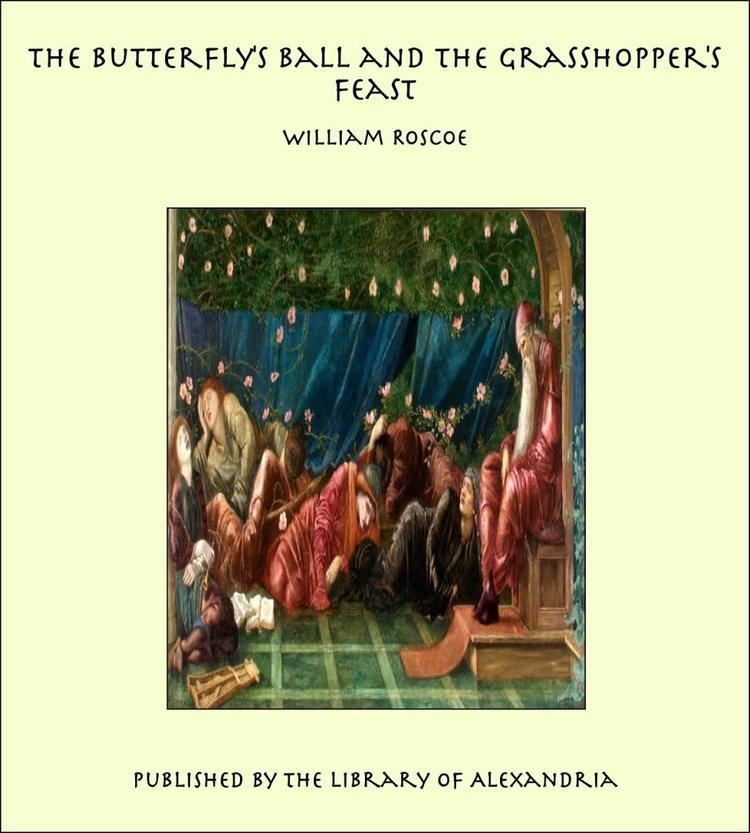Originally published November 1806 Adaptations Butterfly Ball (1976) | ||
 | ||
Similar The Butterfly Ball and t, The peacock party, The lion's cavalcade, The Man with Kaleidosc, The peacock at home | ||
The Butterfly's Ball, and the Grasshopper's Feast is a poem by William Roscoe, written in 1802, and telling the story of a party for insects and other small animals.
Two anonymous sequels were The Peacock 'At Home' and The Lion's Masquerade and the Elephant's Champetre, both initially credited to "A Lady", and describing similar parties for birds and large mammals. The The Peacock 'At Home' was very popular and the 1809 edition revealled the author to be Catherine Ann Dorset
The Butterfly Ball and the Grasshopper's Feast is also the title of a 1973 picture book, loosely based on the poem, by Alan Aldridge and William Plomer. This greatly expanded and altered the original work, focusing more on the animals' preparations for the Ball. Aldridge went on to create two more books based on the sequels; The Peacock Party and The Lion's Cavalcade.
An animated short based on Aldridge's illustrations, but once more focusing on the Ball itself, was made in 1974, with Roger Glover writing the accompanying song Love is All, based on the song Love's All You Need mentioned in the book (which may, in turn, have been a reference to The Beatles' "All You Need Is Love"). This was supposed to lead to a full length animated film, which did not get made. However, Glover had written a full soundtrack, which was performed and released as a rock opera, The Butterfly Ball and the Grasshopper's Feast.
Composer Ryan Fraley created an orchestrated piece based on the poem called "Butterfly's Ball".
